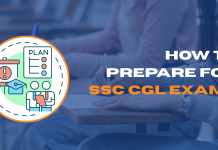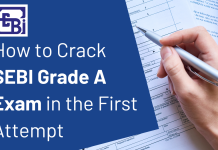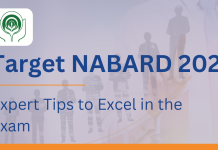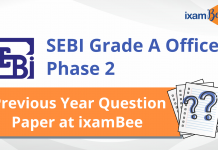Preparing for the SIDBI Grade A and Grade B 2025 exams requires more than just dedication—it demands strategy, focus, and the right timetable. With multiple sections to tackle like Reasoning, Quantitative Aptitude, English, General Awareness, and Professional Knowledge (for Grade B), aspirants often feel overwhelmed.
But what if you could fit your entire preparation into a structured 90-day plan? How about access to a sure-fire plan that covers all subjects, strengthens weak areas, and leaves you confident for the big day? We know you’re interested, which is why this blog brings you exactly that: a practical and proven 3‑month master study plan for cracking the SIDBI exams in 2025.
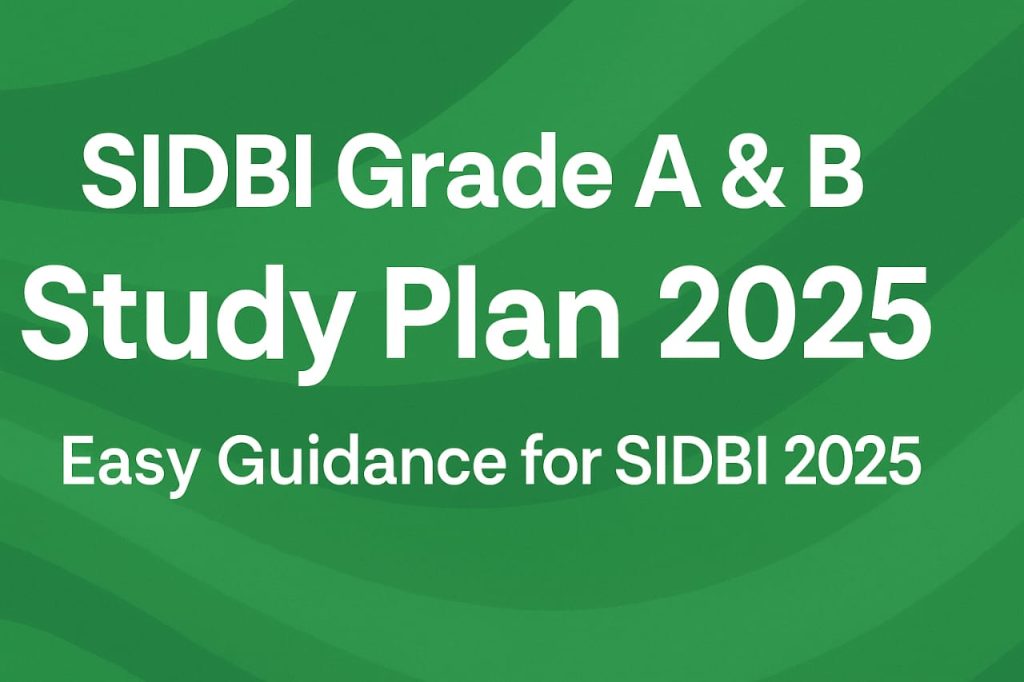
Why a 3-Month Study Plan Works
Of course, three months may seem like a tight schedule. But if you have a focused preparation, it’s enough to ace the SIDBI Grade A/B Exam. By dividing your preparation into three phases—Foundation, Practice, and Revision—you’ll build skills step by step.
Ultimately, you need to put your best foot forward so that you can clear the exam. And no, last-minute cramming is not helping you. This is why we suggest that you begin preparing with our 90 day plan to help you out. Here’s a quick snapshot of the 90-day plan:
| Phase | Duration | Focus Areas |
| Phase 1: Foundation | Days 1–30 | Build core concepts in all subjects |
| Phase 2: Practice | Days 31–60 | Intensive practice with sectional & full mocks |
| Phase 3: Revision | Days 61–90 | Full-length mocks, speed improvement, final polish |
All in all, having a phased approach helps your preparation. Along with thtat, it also makes sure that you peak at the right time—just before the exam.
Phase 1 (Days 1–30): Build Your Foundation
One thing that you should know is that the first month is about learning and understanding the basics. We highly recommend that you use this phase to clear out some important concepts and create short notes for revision later.
Remember this: for Quantitative Aptitude, you need to focus on arithmetic chapters like percentages, ratios, averages, and time & work. Remember that if you spend two hours daily solving 20–25 questions and making note of shortcuts, it will be helpful. On the other hand, for Reasoning, you can work on puzzles, syllogisms, and seating arrangements. Start slow and aim for accuracy.
When you move on to the English Language, focus on grammar rules, reading comprehension, and vocabulary building. Remember that there is value to reading editorials from The Hindu for comprehension and note down 5–10 new words daily.
Don’t forget that General Awareness (GA) is important, especially with SIDBI’s focus on financial and banking updates. Dedicate an hour each day to reading current affairs, RBI updates, SIDBI initiatives, and government schemes.
Finally, for Professional Knowledge (Grade B aspirants), start exploring financial management, banking regulations, and credit appraisal concepts. Read one chapter daily from standard books and supplement with online study materials.
To conclude this cycle, take a sectional test for each subject to monitor your progress and build your test-taking stamina every Sunday.
Phase 2 (Days 31–60): Practice, Analyze, Improve
This phase transitions you from learning to application. Start off by attempting sectional mocks twice a week per subject. Set a timer and simulate exam conditions. For Reasoning and Quant, mix topics in practice sessions to mirror actual exam patterns.
Here’s an example of how to structure your daily schedule during Phase 2:
| Time | Activity |
| 7:00 – 9:00 AM | Attempt sectional mock (Quant/Reasoning/English) |
| 10:00 – 11:30 AM | Review mock results and update error log |
| 12:00 – 1:30 PM | Study and revise Professional Knowledge or GA |
| 4:00 – 5:30 PM | Solve topic-based question sets (Quant & Reasoning) |
| 7:00 – 8:00 PM | Revise GA flashcards and Professional Knowledge notes |
At the end of each week, take a full-length mock test. These tests will help you build exam temperament and manage time effectively. After your post-test analysis is crucial—note down recurring mistakes and work on weak areas the next day.
Don’t forget that this is also the phase where you should start practicing high-level Professional Knowledge questions and stay updated on the latest financial and economic news.
Phase 3 (Days 61–90): Revision and Mock Drills
The final month is all about fine-tuning your preparation and building confidence. Attempt 3–4 full-length mocks every week under strict exam conditions. Make sure that you use the next day to analyze your results and revisiting tricky concepts.
Daily revisions are essential now. Review your error log and short notes regularly. For General Awareness, revise the last six months of current affairs thoroughly. For Professional Knowledge, focus on quick recaps of key chapters and important RBI/SIDBI policies.
During the last two weeks, shift from long study hours to short, focused revision sessions. Aim for mental clarity and avoid burnout. Two days before the exam, stop heavy studying altogether—use this time to relax and prepare mentally for the big day.
Motivation: Your 90 Days to Success
Think of these 90 days as your stepping stone to a rewarding career in development banking. Every mock test is a lesson. Every mistake is progress. Every revision brings you closer to your goal.
Remember, toppers aren’t extraordinary—they’re ordinary people with extraordinary discipline. Stay consistent, trust your plan, and keep moving forward.
Your SIDBI success story starts today and we are here to help you push that dream forward.
Essential Resources to Boost Your Preparation
To complement this plan, there are some serious steps that you can take. After all, besides a well-executed study plan, you do need the right resources that will help you push your exam preparation better. Take a look at some of the resources that you can help for your preparation. Our list is comprised of books from experts along with ixamBee’s resources
- Quantitative Aptitude: R.S. Aggarwal
- Reasoning: A Modern Approach to Verbal & Non-Verbal Reasoning
- GA: Lucent’s GK + Monthly magazines
- Professional Knowledge: Banking Awareness by Arihant, RBI circulars
- ixamBee’s SIDBI Grade A/B Mock Tests and Previous Year Papers
- ixamBee’s SIDBI Grade A/B Online Course and Interview Course
- Daily GA Updates: PIB, RBI site, and reliable current affairs platforms like BeePedia
Summing Up
Cracking the SIDBI Grade A & B exams is not about cramming long hours—it’s about smart study and consistency. This 3‑month master plan gives you a structured roadmap from Day 1 to D‑Day, ensuring you cover the syllabus, practice sufficiently, and revise effectively.
Remember, every mock test teaches you something new, and every mistake is an opportunity to improve. Stay focused, follow your schedule, and maintain a positive mindset. With dedication and the right approach, your success in SIDBI 2025 is not just a dream—it’s a plan in action. So why wait? Start today. Mark your calendar for Day 1 and take the first step toward your career in development banking.
ixamBee specializes in providing expert guidance and resources for banking exams 2025, ensuring that you are well-prepared for the Upcoming Bank Exams like RBI Grade B, NABARD Grade B, IBPS SO, and more. Our courses align with the bank exam calendar 2024, covering all the essential topics. With a focus on the upcoming bank jobs, our Previous Year Papers, BeePedia, SSC CGL, SSC CHSL, SSC MTS and other Mock Tests are designed to help you excel in upcoming banking exams.
Also Read:
The Ultimate SEBI, PFRDA & NABARD Finance Exam Preparation Guide
RBI Rajbhasha and Legal Notification 2025: Everything You Should Know!
The RBI Grade B Officer Journey: Mindset, Preparation, and Patience



